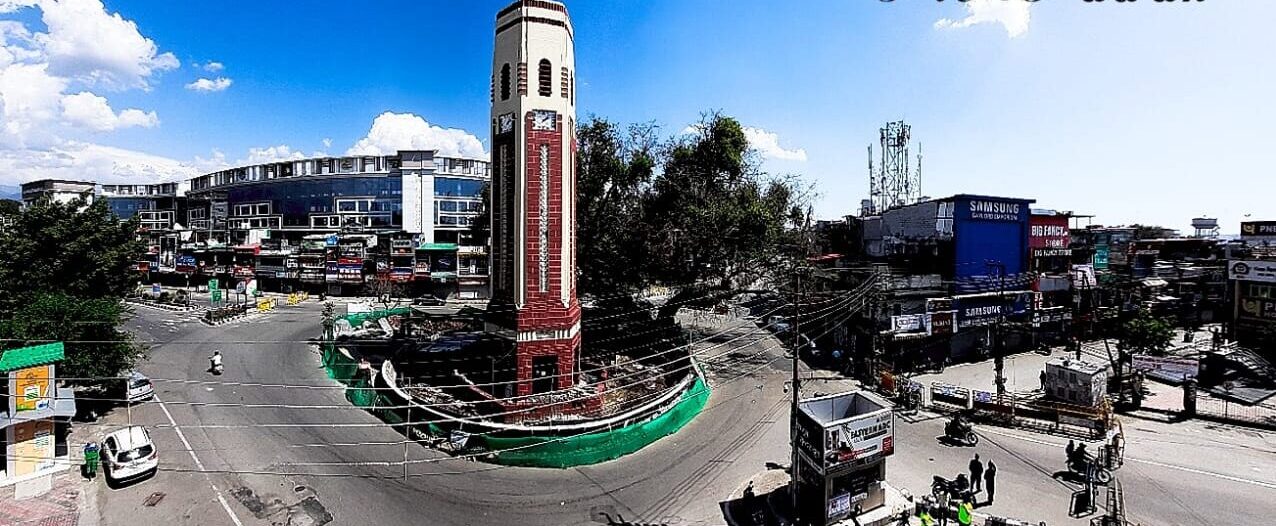Apart from the sprawling great ambience gyms mushrooming across the hill city and growing at unprecedented rate, what is the fitness mobility options for Dehradun citizens? Are the city residents too lazy or simply busy to be seen making active mobility an active lifestyle choice in their daily lives?
In the words of Swedish physician and bestselling author of the book “Factfulness”, let us not assume and base our perceptions on obsolete data that existed decades ago. The average citizen of Dehradun walks a considerable number of steps daily – How do you all think about this statement? Well, yes, it is true indeed for the city residents perhaps a decade or two ago. The situation that emerged in the last 4 years has, however been very different as opposed to general perception. Active Mobility Assessment of Dehradun city during COVID-19 lockdown and post COVID-19 lockdown was studied by the students of DIT University’s Civil Engineering Department as a design project under my supervision in 2019-20 and the database was updated after phase 2 data collection in late 2022. Our findings were initially not a concern for us as the data was collected during the lockdown using google forms from more than 500 residents as a sample selected for the project.
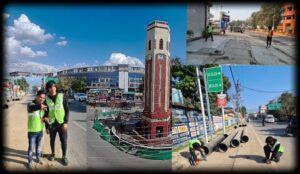
Considering Walk and Bicycle as two prime non-motorized modes of travel connected with active mobility and related to fitness, a staggering 57.5% people responded to walking as their preferred choice to remain fit and around 3.7% responded to using bicycle to keep themselves fit in the pre-lockdown days. During the lockdown, many people felt the void of physical activity in their life and even those who were previously not walking or using bicycle on a daily people resolved to become more active after the lockdown lifts. 21% people resolved to walk 2-4 Kms after lockdown ends and 23.2% people resolved to walk at least 1-2 Kms every day. The Total percentage respondents who wanted to walk as soon as the lockdown ends was 100%, which was indeed wonderful. Only 22% of people had a smaller target of up to 500 m per day. The international research on walkability suggests that willingness to walk decays after 800 m for an average daily walking person. But Dehradun was way more audacious with distance-based targets and excited to start the walk. Even the ones who had a smaller walk target had Yoga, swimming, and other activities on their agenda to remain fit. 11.4% chose to ride bicycle after lockdown ends.
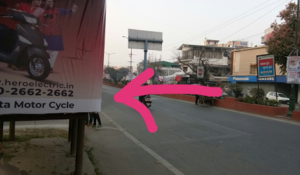
My research team was trying to understand the psyche behind the ground implementation ability of these resolves amidst assessing the available infrastructure. An Inventory survey was conducted across the city on various arterials and collector streets. We were able to find some well-defined pedestrian footpaths in the city scattered in very selective areas. However, we were happy to have witnessed old and pre-existing such paths but, they were not in good maintenance state and more often were marred with obstacle, encroachments, or utility installations. They were not providing a proper seamless connectivity for the safe use of pedestrians. There were no cycle tracks in the city. We discussed the issue of no cycle tracks with Dehradun Smart City official and they told us that due to hilly terrain and narrow residential area roads, this has not been traditionally planned but in future, there might be inclusion of bicycle lanes in some corridors. We decided to conduct extensive inventory surveys, design and urban street redesign scenario for two corridors in well-known and busy arterial corridors, Survey Chowk to Nany’s Bakery and Astley Hall to Clock Tower.
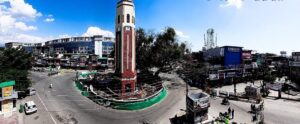
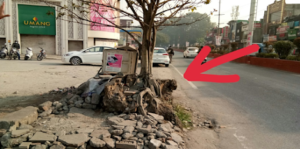
Our findings from resident survey were that 74% residents felt unsafe on roads as a pedestrian and 68% felt unsafe to ride a bicycle within the city. The NMT infrastructure in the city of Dehradun needs significant improvement. Only 26% of the surveyed road has footpath on both sides and 8% has on one side 66% of the surveyed roads lack footpath.
The traffic signals did not accommodate for pedestrian phase till 2019 which was another issue in the safe commute to pedestrians. The bicyclists had not even been considered by MDDA till 2019. The two corridors selected for Urban Street redesign to be inclusive of non-motorized modes based active mobility had a very different issue. Both Corridors had a one direction footpath infrastructure present already.
On the Survey Chowk to Nany’s Bakery corridor this was a discontinuous path with several breaks and obstacles including several small stretches where the footpath was either totally consumed by encroachment or totally disappearing due to the exceeding boundaries of homeowners or commercial establishments. Several commercial establishments had eaten up the area meant for the footpath in order to make on-street parking area for their customers. On the other hand, Astley Hall area was suffering through high order of maintenance issues in its existing pedestrian track even though it is one of the prominent commercial hubs of the city. Even the Comprehensive Mobility Plan of Dehradun conducted its extensive study for traffic management highlighted these issues in its report submitted to the government by UMTC in May 2019. A strong need to understand the need for active mobility corridors, design and maintain such corridors on a continuous level emerges from the inventory study carried out by my research team as well as the CMP document.
Further, let me go back to the citizens who are the biggest end-user and important stakeholders in any city development decision. When my research team collected data for 2022 in phase 2 of the project to understand the after-effects of COVID-19 home isolation and the change in behavior of the citizens, the same 500 respondents were contacted again for the survey part 2. Shockingly now only 43% people were walking everyday against 57.5% in the pre-lockdown times. Cycle ridership also dropped to 2.1%. It was expected to follow up with the revenge tourism trend and we were expecting the respondents to at least cover up 80% on their resolved targets.
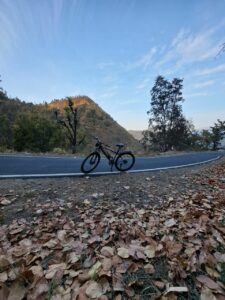
My team reported the statistics and we decided to go for another level in our findings. Since the lockdown was now over and survey respondents have a limited attention span to survey-based questionnaires, we decided to go for telephonic data collection. We called each one of our respondents and could successfully talk to 423 respondents out of 500. The others were either not available or not responding to our phone calls. This time our questionnaire was orally told to them, and the responses were digitally recorded by the team. Since this was a qualitative assessment and involved open ended questions the range of answers was different. To quantify the responses, their responses were classified in categories.
A staggering 76.4% responded to concerns in rise of traffic and rash driving in the city which made them feel unsafe in the city while walking. 56% believed they can significantly get injured if they walk on broken footpaths or non-continuous stretches or at places where road space is shared by pedestrian and vehicles in the absence of a footpath. Another chunk of 73% were not happy with the neighborhood area and almost no availability of any infrastructure for pedestrians. Bicyclists responded to feeling unsafe and were extremely disappointed with no separate bicycle lane infrastructure for them. Bicyclists were very eager if the city could replicate Chandigarh model in Dehradun or take inspiration from Pune.
The citizens of Dehradun need a robust active mobility infrastructure for their daily mobility needs. Providing the essential basics of walk and bicycle-based infrastructure will not only increase the share of non-motorized mode in the city but is also going to be rewarding on an ecological, health and community level. Recently Punjab government has included “right to walk” as a fundamental right and instructed all PWDs, Municipal Corporations to make provisions for pedestrian walkways in their respective areas in all new projects. They have also decided to set a timeline to upgrade all old corridors. This is the result of a long-awaited decision by the Punjab and Haryana High Court on a PIL filed in 2010. Dehradun is a city of highly educated citizens and being the capital city of Uttarakhand as the crown jewel in India, we do not need a similar PIL and long wait for justice to our daily mobility needs. We can simply gain inspiration from global case studies like Copenhagen, Netherlands, Amsterdam and Indian cities like Chandigarh, Pune etc. to understand the impact of providing the right infrastructure to enhance the mode share of non-motorized modes of travel which are eventually enhancing the fitness of residents as well. Our citizens are not busy or lazy to walk or ride a cycle outside. They are willing to move and get active. We just need to provide them with safe infrastructure. We cannot expect our citizens to share the road space with vehicles or use old infrastructure which is in dilapidated state.
Interestingly the current proactive government is completing mega connectivity projects to promote inter-city movement. My hope and request will be for them to give more emphasis on intra-city movement also and with special attention to active mobility projects.
Acknowledgement: I would like to thank my students Er. Ayush Singh, Er. Subhash Chowdhary, Er. Gaurav Semwal, Er. Kartik Gulati and Er. Vivek Agarwal for helping me collect data for this research and even after they completed their degree to help me with the phase 2 of this project on my request. They all are 2021 batch B. Tech pass outs from Civil Engineering Department in DIT University.

Author
Dr. Mansha Swami is a Transportation Engineering Consultant, Researcher and Academician and is currently working as a Postdoctoral Research Associate at the University of Texas at Arlington, United States.
She has been working as an advisor to various government, semi-government and private organizations in transportation planning, urban multimodal transport, traffic, road safety and highway sector in India. Have been Consulting in the following domains in Transportation since a decade. Transportation Planning, Multimodal Public Transportation Planning, Traffic Engineering, Road Safety Audit and Planning – Accident Studies, Black spot rectification, Forensic Crash Investigation & Sustainable Urban Transport Policy Design She pursued her PhD. in Transportation Planning & Engineering from Indian Institute of Technology, Roorkee (India) and Masters in Transportation from SVNIT, Surat (India).
Author’s Blog Address: https://transportationinsights.blogspot.com/2023/05/the-gloomy-fitness-mobility-situation.html
